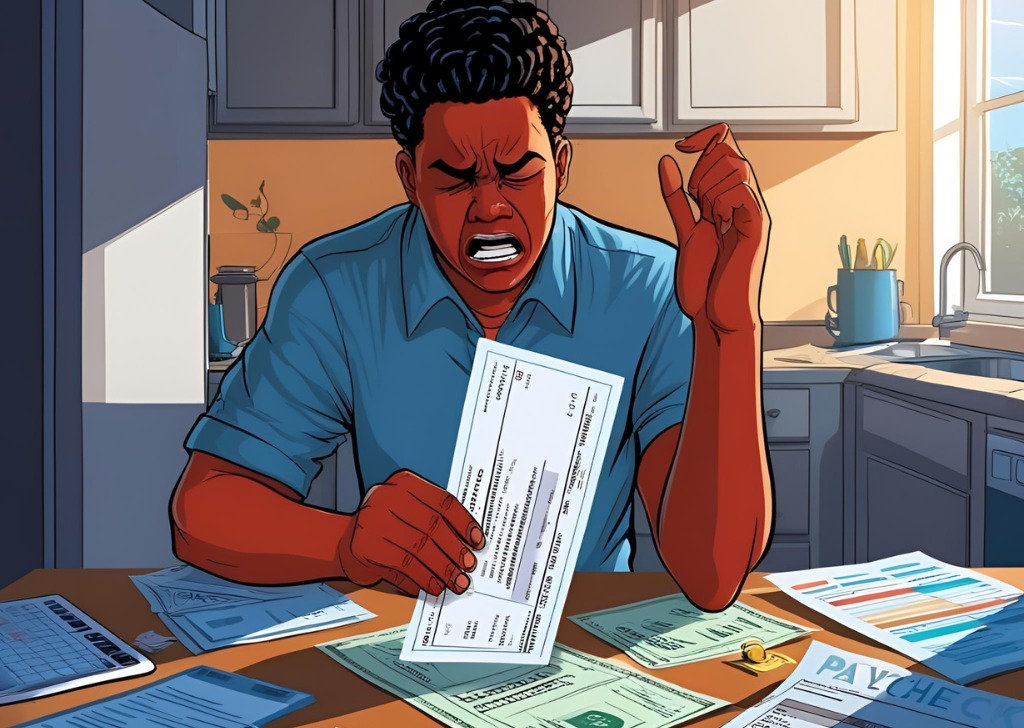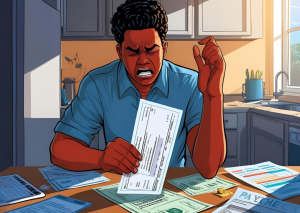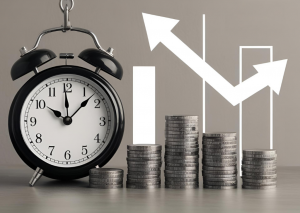Being forced to live paycheck to paycheck means receiving a salary from your employment or independent business and squandering every penny until your next payment arrives. You will not save with this way of life, though, so you won’t have any money in case of an emergency, like being sick or losing your job.

Living paycheck to paycheck might eventually result in a postponed or nonexistent retirement. Here are some strategies for breaking the paycheck-to-paycheck cycle and incorporating saving into your financial plan if you follow this lifestyle and would like to start saving.
Tracking Your Budget
Being aware of where your revenue ends up is the first step towards breaking free from the cycle of paycheck to paycheck. The amount of money you spend on items that fail to improve your life may surprise you. You may track your spending, classify it, and find areas where you can make savings by using any budgeting application. It is an illuminating process that can result in more prudent financial choices and more thoughtful spending.
Assess Your Monthly Bills
Attempt to alter your thermostat, evaluate your current streaming service accounts, and look for lower auto insurance rates to save money on necessities. You may drastically lower your energy costs by lowering your thermostat by a few degrees. Eliminating unused streaming services might also help you have more money in your bank account. Additionally, you may lower your insurance costs by looking for lower auto insurance rates. Combining your house and auto insurance policies, for example, can result in higher savings than separating them across two distinct insurance providers. You may cut costs on necessities and even increase your monthly bill savings by putting these suggestions into practice.
Managing Debt
Spending hard-earned money on debt is a major barrier to escaping the cycle of paycheck to paycheck. The problem is made worse by the growth of purchase now, pay later options and even meal delivery apps. It is crucial to cease taking on new debt, such as credit cards or auto loans, and use the debt snowball approach to pay off existing debt to escape this cycle. This approach is the quickest way to stop making debt payments since it frees up more funds for other budgetary purposes.
Debt with high interest rates, like credit card bills, can be a major barrier to saving much money. Look into applying the debt snowball or avalanche approach, which prioritizes paying off the highest-interest debt first, to reduce debt more quickly. You can gradually free up more of your money by concentrating on the loan with the highest interest rate or the smallest sum. You may attain financial independence and escape the pattern of living paycheck to paycheck by doing this.

Increasing Your Income
Increasing income is necessary to maintain a healthy lifestyle, which will help you move away from living paycheck to paycheck. There are several ways to make additional money in your downtime, even with the difficulties of having a hectic schedule and restricted hours. Increasing your income is essential, even if you have a budget and have cut back on expenditure. Making use of your hobbies and abilities to help others may be a successful method to supplement your income. You may determine your rates for side projects, which could eventually lead to full-time employment. The objective is to improve cash flow into your budget so that you may concentrate on other savings objectives or reduce your gas expenditures once you have more money for debt and savings. The secret is to concentrate on paying off debt and reaching your financial objectives.
Limit Your Lifestyle Expenses
You are not always a better financial planner just because you make more money. It is crucial to prevent lifestyle creep, which occurs when you start earning more money and begin to spend more than you have ever done. It is how you manage your income that determines your level of wealth. Remain focused, mindful, and within your spending limit. Food, clothes, housing, entertainment, and transportation are all included in the cost of living. Reduce these expenses and free up funds by eating out less, shopping at bargain stores, buying a less costly automobile, or buying a smaller house. Think about more methods to reduce your expenses and increase your savings.
Shopping for Better Insurance Deals
Searching for better insurance rates on homeowners’, renters’, and car insurance has grown necessary. It is critical to approach your money comprehensively, altering spending patterns and examining previous transactions to make sure they serve your interests. Finding better insurance offers and escaping a financial stress cycle may require time and effort, but the effort is worthwhile. It is critical to compare prices and make well-informed choices.
Automating Your Payments
Automating as much as you can is one of the simplest strategies to manage your money. Configure automatic bill payments, debt repayments, and transactions to your savings account. By implementing automation, you may make sure that you consistently contribute to your financial objectives before you have the opportunity to spend them. The majority of institutions provide options for automatically transferring funds from your checking account or paycheck to a savings account. You might find it simpler to avoid spending your entire income if you use this automated method of saving. Just deposit a certain amount of money into a savings account every payday unless you do not have the means to have money transferred there routinely.
Sticking to a Realistic Budget
Overcoming the downward spiral of paycheck to paycheck starts by creating a realistic budget. There is more to a budget than just an array of numbers, and sticking to a realistic budget is the most fundamental rule of financial stability. It serves as a guide for your financial future, detailing how all of your income will be used for debt reduction, savings, or living costs. Budgeting does not have to be a laborious, paper-pen exercise in today’s technologically advanced society. You have access to several budgeting tools that are intended to make this process easier. They may monitor your earnings and outlays, assist you in creating and meeting financial objectives, and even send you reminders to help you remain on course.





